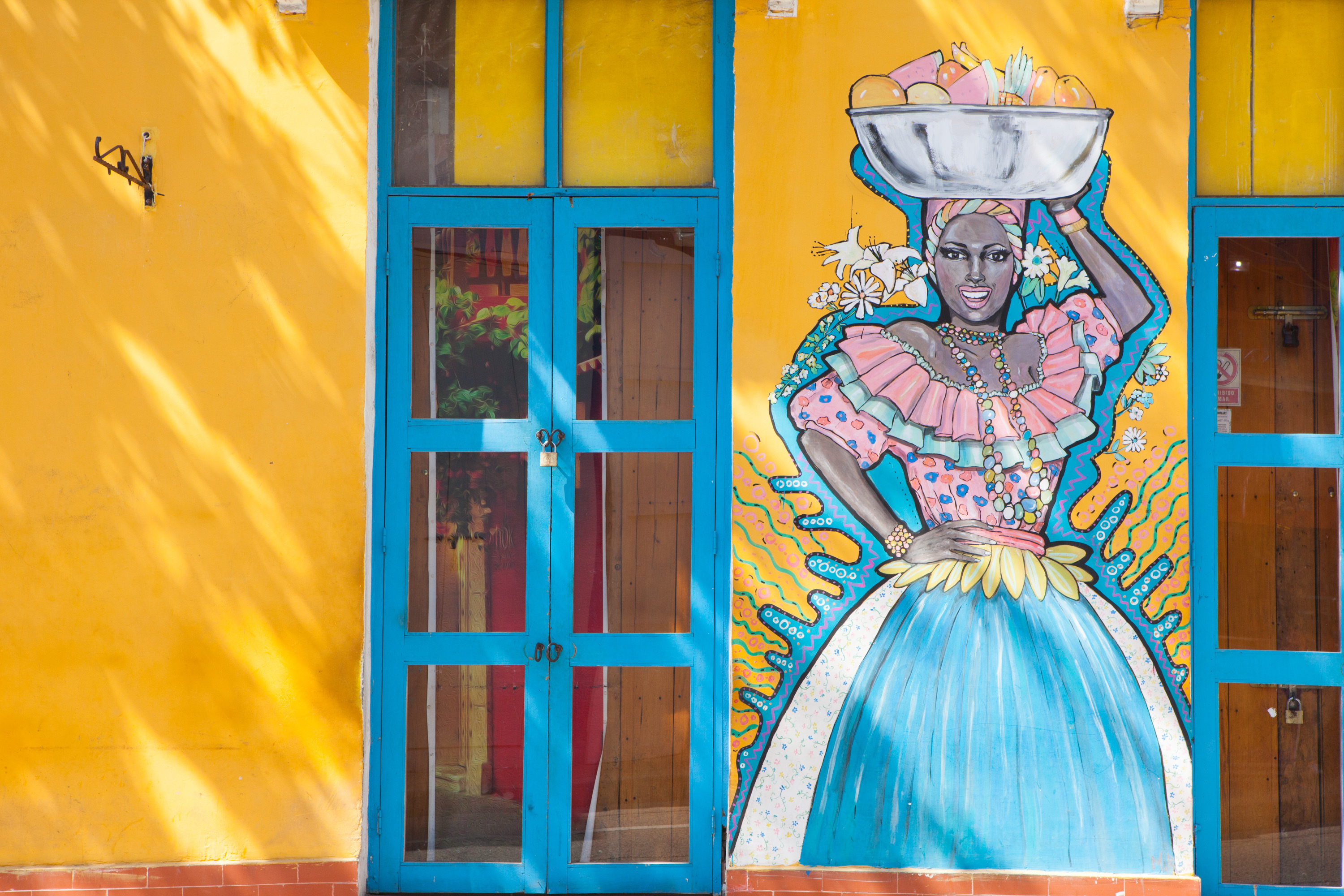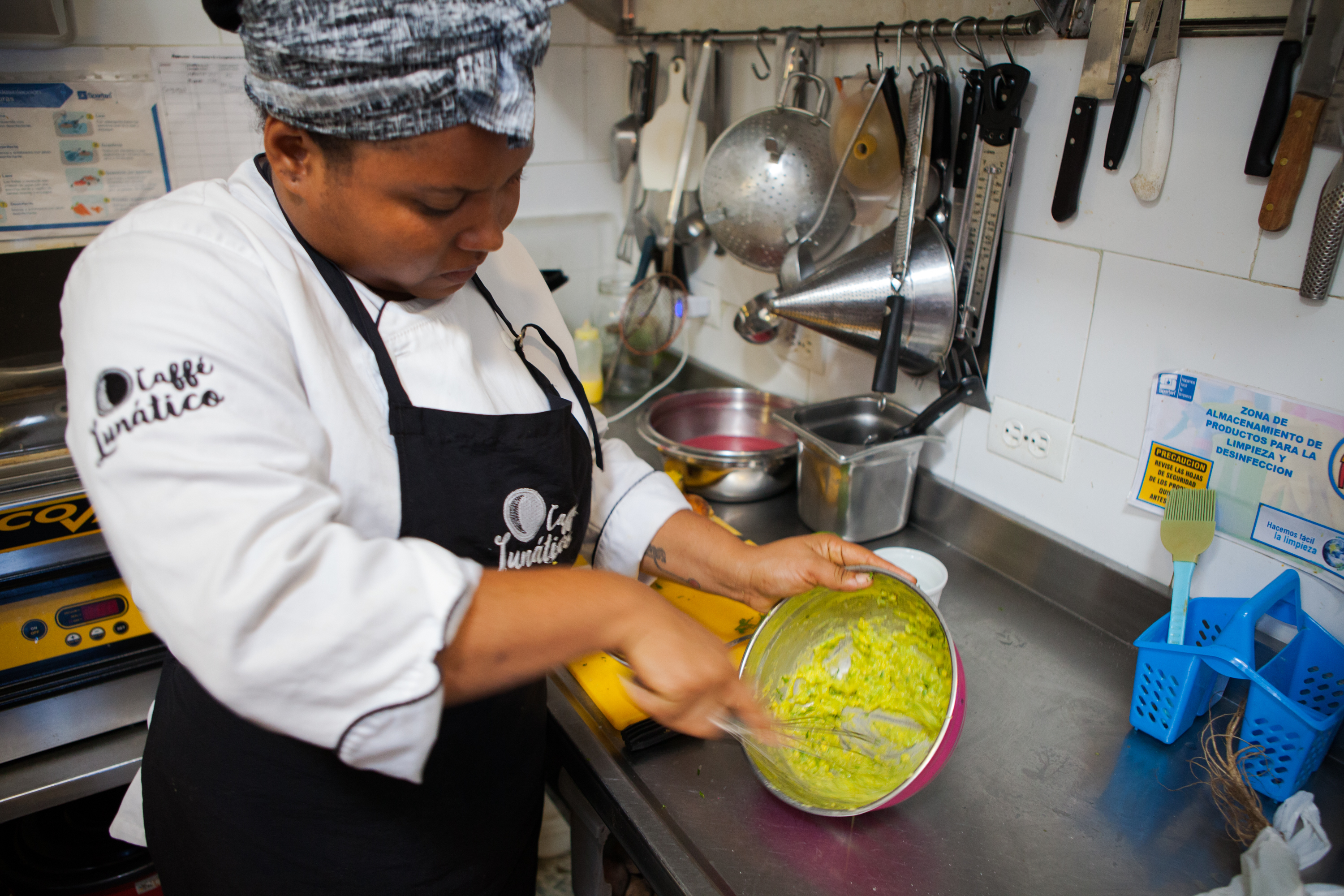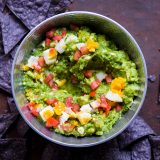As I walked the colonial streets of Cartagena, Colombia, past homes painted lavender, royal blue, aquamarine, mango orange and marigold, my search loomed large. I was looking for ají de aguacate—a coarse avocado-based salsa mixed with hard-cooked eggs. Colombia’s answer to guacamole.
Problem was, I couldn’t find it anywhere.
It wasn't for lack of avocados—they were ubiquitous: pureed and tossed with poached shrimp as an appetizer; chopped and mixed with tomato as a side for soupy black beans and rice; blended with milk and sugar for “juice.” One morning, over a breakfast of fresh melon and eggs with squeaky-salty costeño cheese, I saw a man in a soccer jersey wheeling a broad wooden cart laden with avocados down the street, calling out, “Aguacate!” Locals will buy avocados on the street, ask vendors to cut them in half, then spoon out the insides for a sidewalk lunch.
But when I asked Cartageneros about ají de aguacate, the phrase drew puzzled looks. “Guacamole?” one waitress replied. Mention of hard-cooked eggs was met with equal incredulity.
Perhaps ají de aguacate was just a myth. I set out into Cartagena to learn the truth.

The first version of guacamole that Carmen Herrera, sous chef at the hip fusion restaurant Caffé Lunático, whips together is so thin and smooth with vinegar and lime, it’s practically a sauce. In fact, she takes a serving spoon and smears it on a plate. It adds color to a stylized presentation of posta negra (sweet, spiced braised beef) and plantains caramelized in cherry cola and butter. The meal she makes for us is fantastic—but I ask if this is how she would make guacamole at home. It’s not.
So she takes me back to the restaurant’s tiled kitchen and prepares it as she would on a weekday, as a quick topping for patacones, the twice-fried smashed plantains that are as basic to the Cartagenan diet as toast.
Herrera cuts a large, plump avocado in half. It’s a different variety from the wrinkled, dark-skinned Hass avocados that dominate the U.S. market. Its skin is smooth and green, its flesh as soft and yellow as butter. Herrera trims away some bad parts, then mashes the rest with a fork. Then she takes a whisk to it.

She adds chopped scallions and cilantro. She dices white onion and, for lack of a fresh pepper, a dried chili. In they go, with a tablespoon of white vinegar and a handful of sea salt. She whisks again, vigorously, tastes and adds lime zest and juice. She whisks a third time.
Though it’s still creamy, this guacamole has far more body. It’s salty, simple, tangy—brighter than the guacamoles I’m used to. I go back for forkful after forkful.
That brightness, courtesy of the double shot of acid, turns up again in the guacamole I try the next day.
Miguel Zuniga doubles as a cook and guide at Marlene, a beachside establishment in La Boquilla, the fishing village 5 miles up the coast from Cartagena. Before we board a canoe to tour a mangrove swamp, he talks to me about cooking. “You don’t need that many ingredients to make food taste good,” he says.
Besides vinegar, lime and avocado, his guacamole includes salt and cilantro. Some people mash in onion, and sometimes he’ll mix in suero, a silky, tangy sour cream-like condiment I have rapidly come to crave here. (Naturally, I ask to try guacamole with suero; it makes the guacamole thick and ultra-creamy, but it also smooths out the tang a bit.) But he’s never heard of adding egg.
I explain that, for Americans, guacamole is synonymous with Mexican food, and that I was wondering what makes Colombia’s guacamole Colombian. Zuniga stops me.
“Guacamole, for me, is a global thing,” he says. “It changes depending on the country.”
Avocados grow throughout North and South America, from California to Chile (not to mention elsewhere). And they are exported everywhere. “Guacamole” might be a universal term, but that—and the inclusion of avocado—might be the only unifying factor in the world of guacamoles. In central Mexico, there's no acid. In Venezuela, it’s loaded with garlic and bell pepper and made as smooth as mayonnaise. On the West Coast and beyond, it’s seasoned with cumin.
Each country has its own take—and each region within those countries has different adaptations, as does each cook. I was searching for a definitive answer where there was none.
As my trip winds down, I’ve nearly tired of guacamole. Each one I’ve tried has been different from the last (and from the taco-joint fare we find in the U.S.). But I still have not solved the mystery of ají de aguacate.
I’m ready to resign myself to defeat when I speak with Jaime Rodríguez and Sebastian Pinzón, two chefs and Cartagena transplants who grew up close to Bogotá. At the tail end of our conversation, I ask how they make guacamole.
“With egg!” Pinzón pipes up.
As it turns out, I have picked the wrong city to visit for trying ají de aguacate. Though hard-boiled eggs in guacamole are definitely not costeño (of the coast), in Bogotá, they’re standard. As are lime, vinegar and ají—fresh pepper.
The eggs add texture, Rodríguez says. They’re also authentic to Bogotá’s version of guacamole.
I am relieved, and just a little disappointed I didn’t get to actually taste ají de aguacate. Then I have an even better stroke of luck.
“Guacamole, for me, is a global thing,” says Miguel Zuniga. Each country has its own take, as does each region and each cook within that country.
It happens at my last cooking session, with a freewheeling French chef named Gilles Dupart who moved to Cartagena a decade ago to open a restaurant, Oh La La. We’re slated to prepare some of the restaurant’s experimental dishes—an avocado-apple salad, a sour mango “ceviche” with a coconut cream-peanut butter marinade, plus a version of suero that Dupart sours with a puree of vinegar and caramelized onions.
He’s also selected another recipe from his collection of Colombian cookbooks—ají de aguacate.
The recipe is straightforward. To me, it’s reminiscent of the guacamole I’ve been making my family for years: three avocados, chopped tomato and white onion, cilantro, lime and salt. The differences are vinegar, hard-cooked egg and a thin paste of salt and mild fresh red pepper, made with a mortar and pestle. Dupart uses a massive whisk to mash it all together. He mixes it to a coarse consistency, and then the group of us—reporter, photographer, translator, chef, sous chef—encircle the guacamole, taking tiny tastes, doctoring it with lime and salt. Finally, we hit upon the right balance.
I scoop some up with a spoon. Of all the guacamoles I’ve tasted on this trip, this is by far my favorite. It has full body and flavor, and the same pronounced tang as the one I tasted at Caffé Lunatico. Thanks to the tomato, onion and cilantro, it’s also familiar—but the egg adds richness and contrast. To be polite, I dollop it onto patacones, but I could eat it all, straight from the bowl.
I leave Cartagena happy, appetite and curiosity sated, eager to make my family a new and improved version of guacamole.




